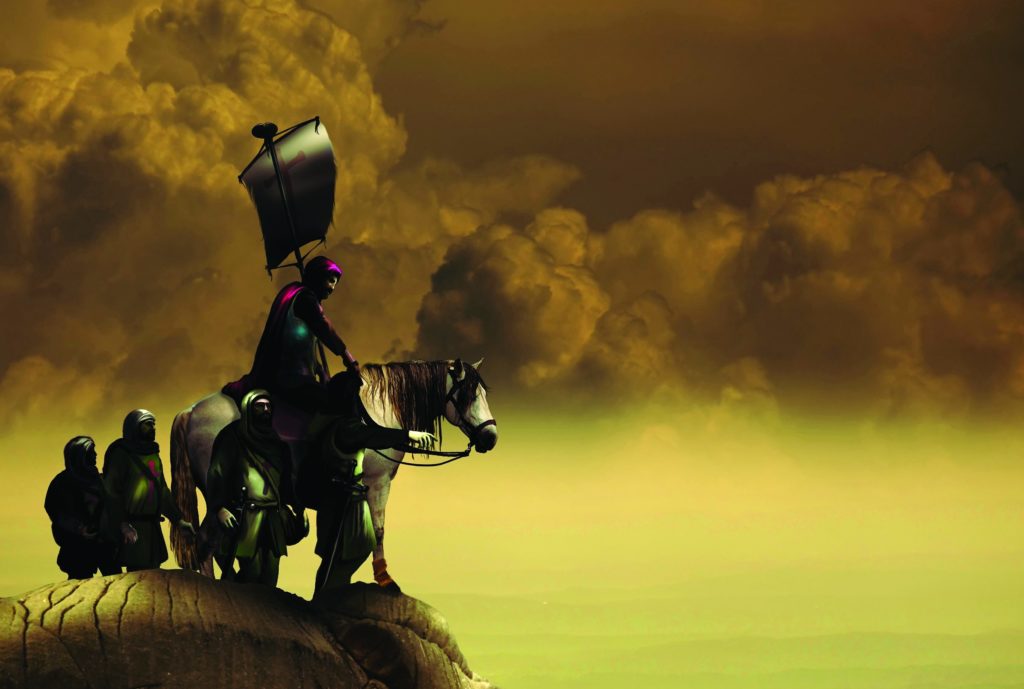Saint Francis

From Party Boy To Radical Christ-Follower
St Francis (born Giovanni di Pietro di Bernardone) was the popular son of a silk merchant who dreamed of a military career during the Crusades. He was generous and popular and lived a luxurious lifestyle.
In his early 20s he was captured and imprisoned after a skirmish with a neighbouring city and later nearly died of an illness. These two long periods of inactivity gave him time to reflect. He began to turn to prayer, spending long hours praying alone and meditating on Christ’s life.
He increasingly desired to be like Jesus, to the point where one day he did something that he later explained would have normally disgusted and frightened him: he ran to embrace and kiss a person suffering from leprosy whom he had seen on the road. As he got back on his horse, he was filled with peace and joy.
That was the tipping point into sanctity for Francis. From that moment, he sought out the suffering and sick and gave them whatever he could; money, clothing, and tender affection, with no regard for the damage it was doing to his reputation! And he continued to be drawn into periods of deep prayer and conversations with Jesus.
Rebuilding the Church
He wanted to be poor in imitation of Jesus. He refused to own anything, even giving the clothes off his back when he thought someone else needed them. While praying in the poor abandoned field chapel of San Daniamo he heard the Lord say from the crucifix, “Francis, go and rebuild my church which has fallen into ruin”.
He took this literally, taking some of his family’s cloth and selling it to fund the chapel’s restoration. This incensed his father, who was already anxious about his son’s strange behaviour and endless giving to the poor. He had Francis arrested and demanded that he be officially disinherited. Francis said that since he served God now, he would only obey the bishop, not a judge.
Before the bishop he took off his clothes, gave them to his father said that, “Hitherto I have called you my father on earth; henceforth I desire to say only ‘Our Father who art in Heaven.’”
He became a beggar himself and continued working on the chapel, but soon attracted other young men who realised he was not a religious lunatic but a deeply loving and inspiring follower of Christ.
A radical new movement grew around him. Francis decided they would be missionaries living on Gospel-inspired complete reliance on God and sought formal recognition by the Church for his Order of Friars Minor. He also prompted the brave young noblewoman Chiara Offreduccio (St Clare, foundress of the Poor Clares) to renounce all for Christ as well. Rather than building new physical churches, St Francis’ work built a new way of being the Church for the times in which he lived.
Christian unity and interfaith dialogue
The Pope valued Francis for his loyalty to the Church at a time when its unity was threatened by various reforms. He and his followers converted thousands to Catholicism in a time when Christians were fighting against followers of Islam in the Crusades, and were also fiercely divided among themselves about what they believed.
His efforts towards Christian unity and dialogue with Islam were completely radical and new. The fact that he managed to cross enemy lines to meet with Sultan Malek Al-Kamil of Egypt during the 5th Crusade and return unharmed, was a crucial first step in the history of Christian-Muslim dialogue.
It’s said that the Sultan was impressed by the poor and passionate friar, and converted to Christianity on his deathbed. Meanwhile, St Francis amended his order’s rule to permit his friars to live peacefully among Muslims if they felt called to do so. For the fascinating story of their encounter, see the book The Saint and the Sultan by Paul Moses. Inspired by St Francis’ example, Pope John Paul II invited 160 different religious leaders of different Christian denominations and other faiths to the first World Day of Prayer for Peace in Assisi in October 1986.
St Francis amended his order’s rule to permit his Friars to live peacefully among Muslims
Devotion to the Eucharist
St Francis saw as the perfect example of poverty the fact that the second person of the Blessed Trinity became a human being, offered himself on the cross, and offers his body to us in the Eucharist.
“The Eucharist and poverty for St Francis are two parts of the same thing,” says Dominican Fr Augustine Thompson OP, author of Francis of Assisi: A New Biography.
While St Francis himself wore a rough, patched-up habit, he was concerned that altar cloths and liturgical vessels be very beautiful. He asked friars to take silver vessels for the Masses of priests who couldn’t afford them. He never became a priest himself but was ordained as a deacon. At the heart of his spirituality is radical living of the Gospel life, with the Eucharist being the ultimate expression of it.
Creation mirrors God
St Francis recognised creation as a manifestation of God’s beauty, goodness, and benevolence. He had a deep affinity with animals and nature, he preached to the birds, befriended wolves, and composed a hymn reflecting his love of creation. Inspired by the poverty of Jesus’s birth to a family welcomed only by humble farm animals and signs in the heavens, he created the first Christmas crib. No wonder
He’s best known as the patron of ecology and animals, but he is also the patron of merchants and Italy.
Suffering, the Stigmata, and death
Born in Assisi in 1181 or 1182 St Francis was only 44 or 45 when he died in Assisi in 1226.
He did great physical penance, including fasting, and would later apologise to his “Brother Body”. After a vision of an angel around the Feast of the Exhaltation of the Holy Cross two years before he died he received the stigmata, the mysterious wounds of Christ’s passion, in his side and on his hands and feet. His is the first recorded case of the stigmata.
At the end of his life he was almost completely blind and in ill-health. After a brutal but unsuccessful operation for restoring his sight he retired to a tiny hut provided by St Clare at her monastery where, in his deeply joyful way, he composed the glorious Canticle of the Sun.
When dying, he asked his friar brothers for permission to lie naked on the ground, allowing himself to be covered only by a simple borrowed cloth. – By Marilyn Rodrigues
